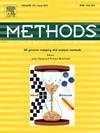Methodologies for label free Raman microspectroscopic monitoring of viral replication processes in vitro
IF 4.3
3区 生物学
Q1 BIOCHEMICAL RESEARCH METHODS
引用次数: 0
Abstract
This study demonstrates the use of Raman Spectroscopy, integrated with multivariate statistical analysis, to monitor the process of viral infection in cells, in-vitro, using the model example of Sendai Virus (SeV) infection in LLC-MK2 monkey kidney cells. A comprehensive methodology is described for determining a precise multiplicity of infection, 48 h post infection, tailored for analysis of viral-host interactions using Raman Microspectroscopy. SeV infected LLC-MK2 cells were fixed on a gold-coated glass slide for Raman spectroscopic analysis. 30-point spectra of uninfected control and 30-point spectra of SeV-infected cells were acquired, focusing randomly on the individual cells. Mean Raman spectra of the control and SeV-infected LLC-MK2 cells revealed spectral differences of peaks corresponding to nucleic acids (485 cm−1, 785 cm−1), lipids (1445 cm−1) and proteins (1600 cm−1, 1655 cm−1). These changes in the relative intensities of Raman peaks indicate modifications in the biochemical content, potentially due to viral entry and replication inside the cells. Principal Components Analysis distinguished between control and SeV-infected LLC-MK2 cells, indicating significant biochemical alterations in response to the SeV infection. Partial Least Squares Discriminant Analysis can be employed to quantify the differentiation of the spectral datasets of the infected/noninfected cells, classifying them with 100 % sensitivity and specificity. The detailed methodology described in the study is potentially a powerful tool for tracking viral replication and detecting viral infections and has the potential to impact future research on host-virus interactions and viral diagnostics. Further research on these spectral differences can contribute to developing more efficient viral screening techniques and a better understanding of viral infections.
无标签拉曼显微光谱监测体外病毒复制过程的方法
本研究以仙台病毒(SeV)感染 LLC-MK2 猴肾细胞为例,展示了拉曼光谱与多元统计分析相结合的使用方法,用于监测体外病毒感染细胞的过程。本文介绍了一种综合方法,用于确定感染后 48 小时内的精确感染倍数,并利用拉曼光谱分析病毒与宿主之间的相互作用。将感染 SeV 的 LLC-MK2 细胞固定在镀金玻璃载玻片上进行拉曼光谱分析。随机聚焦单个细胞,获取未感染对照组的 30 点光谱和 SeV 感染细胞的 30 点光谱。对照组和受 SeV 感染的 LLC-MK2 细胞的平均拉曼光谱显示,核酸(485 cm-1、785 cm-1)、脂质(1445 cm-1)和蛋白质(1600 cm-1、1655 cm-1)对应的光谱峰存在差异。拉曼峰相对强度的这些变化表明生化成分发生了变化,可能是由于病毒进入细胞并在细胞内复制所致。主成分分析区分了对照组和感染 SeV 的 LLC-MK2 细胞,表明生化成分在 SeV 感染后发生了显著变化。偏最小二乘法判别分析(Partial Least Squares Discriminant Analysis)可用于量化受感染/未感染细胞光谱数据集的区分,对它们进行分类的灵敏度和特异性均为 100%。研究中描述的详细方法可能是跟踪病毒复制和检测病毒感染的有力工具,并有可能影响未来宿主-病毒相互作用和病毒诊断方面的研究。对这些光谱差异的进一步研究将有助于开发更有效的病毒筛选技术和更好地了解病毒感染。
本文章由计算机程序翻译,如有差异,请以英文原文为准。
求助全文
约1分钟内获得全文
求助全文
来源期刊

Methods
生物-生化研究方法
CiteScore
9.80
自引率
2.10%
发文量
222
审稿时长
11.3 weeks
期刊介绍:
Methods focuses on rapidly developing techniques in the experimental biological and medical sciences.
Each topical issue, organized by a guest editor who is an expert in the area covered, consists solely of invited quality articles by specialist authors, many of them reviews. Issues are devoted to specific technical approaches with emphasis on clear detailed descriptions of protocols that allow them to be reproduced easily. The background information provided enables researchers to understand the principles underlying the methods; other helpful sections include comparisons of alternative methods giving the advantages and disadvantages of particular methods, guidance on avoiding potential pitfalls, and suggestions for troubleshooting.
 求助内容:
求助内容: 应助结果提醒方式:
应助结果提醒方式:


